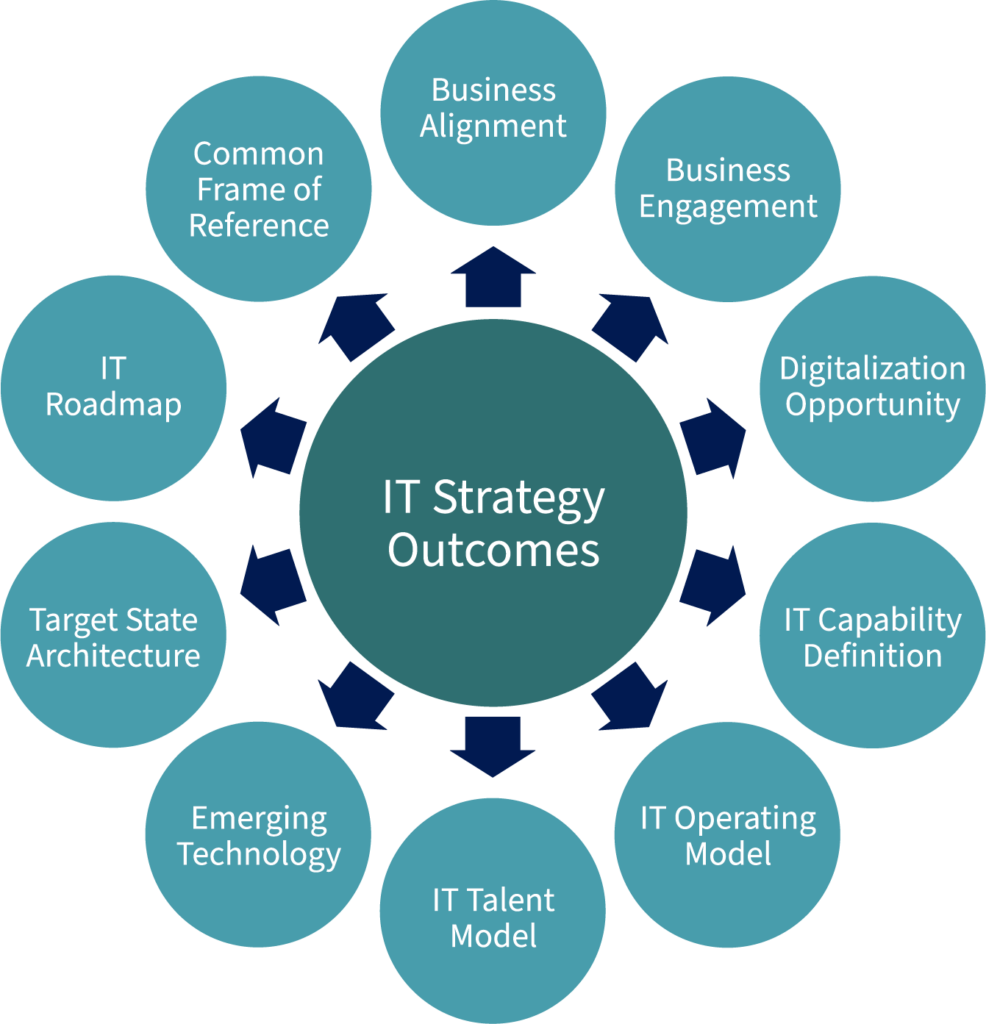What do you need from your IT strategy?
IT strategy has taken the center-stage in many organizations as they grapple with new business models, competitive threats from digital transformation, technology-led disruption of their business model, and the potential of emerging technologies.
An IT strategy, ultimately, should direct the choice of IT investments to those capabilities that advance the business strategy, however, the IT strategy creation effort can produce outcomes in ten broad areas outlined in the figure below.

- Business Alignment — Ensure IT goals and objectives are aligned with and support business goals and objectives
- Business Engagement — Engage business on how IT can partner with it to enable business agility and growth
- Digitalization Opportunity — Identify digital transformation opportunities for re-imagining business processes, customer engagement, etc.
- IT Capability Definition — Identify IT capabilities (combination of people, process, & technology) needed to enable business objectives
- IT Operating Model — Restructure IT operating model for agility, automation, resiliency, etc. and optimize the supplier ecosystem
- IT Talent Model — Match IT talent recruitment, training, and retention to IT’s role, core capabilities, and future requirements
- Emerging Technology — Establish capabilities to continually explore, adapt, and adopt emerging technologies
- Target State Architecture — Summarize target-state architecture and guiding principles to support IT governance and standards
- IT Roadmap — Provide a high-level roadmap to guide and govern annual planning, portfolio prioritization, and IT project selection
- Common Frame of Reference — Communicate to stakeholders how IT operates, supports, and enables business strategy
While each outcome can be important, it is equally important to prioritize these outcomes based on the organizational context, IT operating maturity, and level of business-IT engagement. Since strategy, in its essence is about making choices, a prioritization of outcomes is a natural pre-cursor.
Below are a few examples of outcomes that would be prioritized based on the business situation:
| Situation | Outcomes to Prioritize |
| Disruptive and new business model |
|
| Material disconnects between the business and IT |
|
| Fragmented IT foundation |
|
